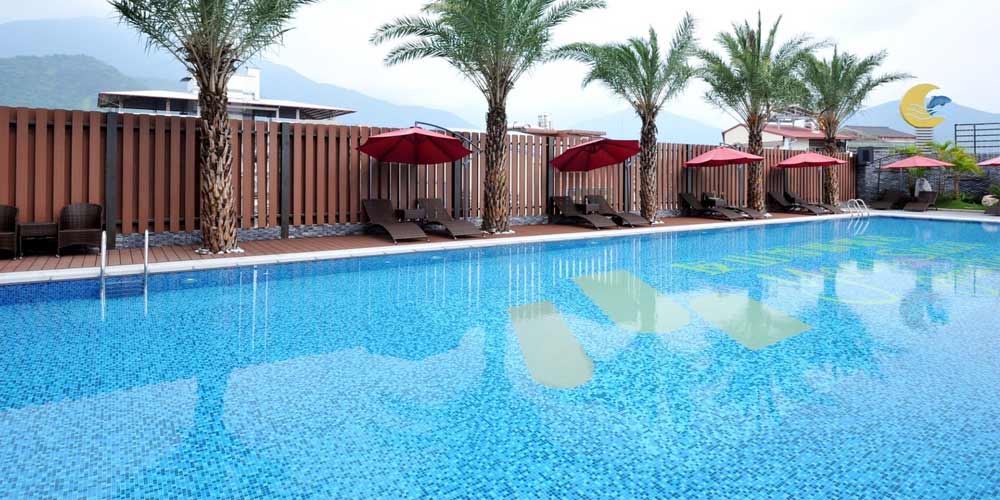Yog tias koj lub pas dej da dej tseem ntsuab tom qab poob siab, yuav muaj ntau yam laj thawj rau qhov teeb meem no. Shocking lub pas dej ua ke yog txheej txheem ntawm kev ntxiv cov tshuaj chlorine ntau los tua algae, kab mob, thiab tshem tawm lwm yam kab mob. Nov yog qee qhov laj thawj vim li cas koj lub pas dej da dej tseem ntsuab:
Kev kho mob tsis txaus:
Tej zaum koj yuav tsis tau ntxiv kev poob siab txaus rau lub pas dej. Ua raws li cov chaw tsim khoom cov lus qhia ntawm cov khoom poob siab uas koj siv, thiab nco ntsoov ntxiv qhov tsim nyog raws li koj lub pas dej loj.
Organic khib nyiab:
Yog tias muaj ntau cov organic khib nyiab hauv lub pas dej, xws li nplooj lossis nyom, nws tuaj yeem haus cov tshuaj chlorine thiab cuam tshuam nws txoj haujlwm. Tshem cov khib nyiab tawm ntawm lub pas dej thiab txuas ntxiv nrog kev kho mob poob siab.
Yog tias koj tseem tsis tuaj yeem pom hauv qab tom qab ua rau koj lub pas dej ua rau poob siab, koj yuav tsum tau ntxiv cov lus qhia los yog flocculant rau hnub tom qab kom tshem tawm cov algae tuag.
Flocculant khi rau me me particle impurities nyob rau hauv dej, ua rau lawv clump ua ke thiab poob mus rau hauv qab ntawm lub pas dej ua ke. Ntawm qhov tod tes, Clarifier yog cov khoom siv tu vaj tse siv los kho cov ci ntsa iab rau cov dej me ntsis. Lawv ob leeg khi microparticles rau hauv cov khoom loj. Txawm li cas los xij, cov khoom tsim los ntawm cov lus qhia meej raug tshem tawm los ntawm lub tshuab pom, qhov flocculants xav tau sijhawm ntxiv thiab kev siv zog los nqus cov khoom uas tau poob rau hauv pas dej ua ke.
Tsis zoo ncig thiab pom:
Kev tsis txaus thiab kev lim dej tuaj yeem cuam tshuam qhov kev faib tawm ntawm kev poob siab thoob plaws hauv lub pas dej. Xyuas kom meej tias koj lub twj tso kua mis thiab cov lim dej ua haujlwm kom raug, thiab ua haujlwm rau lub sijhawm ntev los pab tshem dej.
Koj CYA (Cyanuric Acid) lossis pH qib siab dhau lawm
Cov tshuaj chlorine stabilizer(Cyanuric Acid) tiv thaiv chlorine hauv lub pas dej los ntawm lub hnub UV rays. UV lub teeb puas los yog degrades unstabilized chlorine, yog li ua chlorine tsis zoo. Txhawm rau kho qhov no, koj xav kom paub tseeb tias koj qib CYA tsis siab dua 100 ppm ua ntej koj ntxiv koj lub pas dej da dej. Yog tias qib cyanuric acid yog siab me ntsis (50-100 ppm), tsa cov tshuaj chlorine rau kev poob siab.
Muaj kev sib raug zoo ntawm kev ua tau zoo ntawm chlorine thiab qib pH ntawm koj lub pas dej. Nco ntsoov sim thiab kho koj qib pH rau 7.2-7.6 ua ntej ua rau koj lub pas dej poob siab.
Muaj cov hlau:
Cov pas dej tuaj yeem hloov ntsuab tam sim ntawd tom qab xav tsis thoob thaum lawv muaj cov hlau zoo li tooj liab hauv dej. Cov hlau no oxidise thaum raug cov tshuaj chlorine siab, uas ua rau cov dej hauv pas dej ua kom ntsuab. Yog tias koj lub pas dej muaj teeb meem hlau, xav txog kev siv cov hlau sequestrant los decolor thiab tiv thaiv staining.
Yog tias koj twb tau sim ua kom poob siab hauv lub pas dej thiab cov dej tseem ntsuab, xav txog kev sab laj nrog tus kws tshaj lij hauv pas dej lossis tus kws tshaj lij dej chemistry los kuaj xyuas qhov teeb meem tshwj xeeb thiab txiav txim siab qhov kev ua haujlwm zoo tshaj plaws rau koj qhov xwm txheej tshwj xeeb.
Post lub sij hawm: Mar-12-2024


